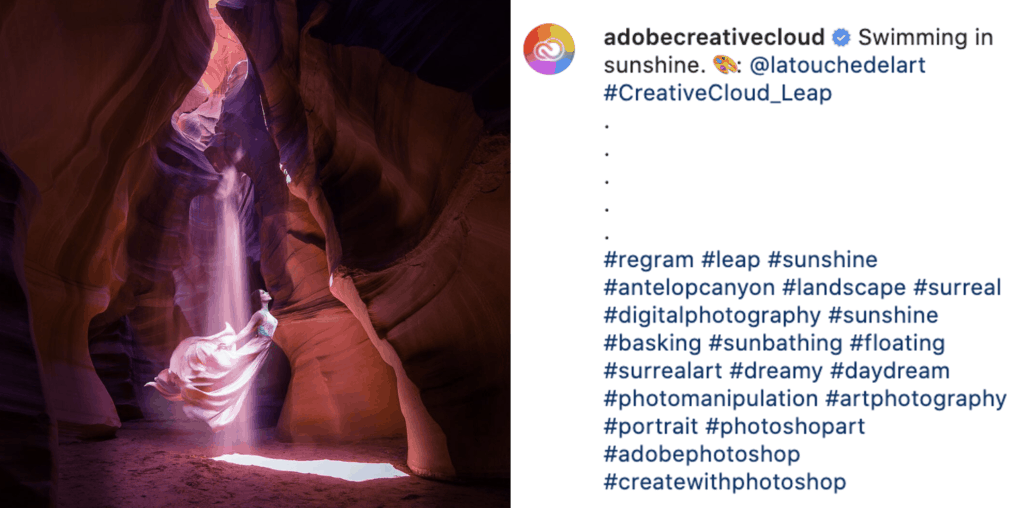In the beginning, branding tended to focus more on products — what a company sells. Today, branding has become a way to storytell a brand’s values — what a company believes in. This is done by showing its audience the brand’s personality, and what the brand has to offer. Looking at the bigger picture, branding is essentially the promise a brand makes to provide experiences that align with customer expectations. To find out more about branding, you can check out one of our earlier articles on the topic.
Before we understand the link between branding and content, let us first define what a brand is. A brand is an idea or image of a specific product or service that consumers can relate to, and is usually instantly recognisable by its name, logo, slogan, or even color scheme.

Take this for instance — which brand is this? You already knew that it was Coca Cola (Image: Expressions). Or what about the famous ‘G’ with its red, blue, green, and yellow colours? Yes, that’s right, it’s Google. If you are able to identify the brand even without seeing its name, this shows powerful branding at work.
The Relationship Between Branding And Content
Why do companies work so hard on perfecting their branding? Simple. Good branding can increase brand recognition, familiarity and recall, ensuring that your brand is always top-of-mind (TOM) to consumers. Studies have shown that brands with high TOM recall tend to perform better as consumers turn to them as their go-to brands, saving on search time. Today, the most basic and common way of brand-building is content marketing. That’s where you get the cliché, “content is king” — but really, content is king. The purpose of content is to educate, convince, and entertain your target audience, which are all important pieces of building brand recognition and connection. Secondly, content also helps to communicate your message to your target audience with consistency, value, and originality (Source: theintactone.com). Furthermore, when content is aligned with what your audience is interested in, this can go a long way in building long-lasting and loyal relationships with your customers.
One form of content that helps with branding is user-generated content (UGC). Featuring content from your followers helps them feel valued, especially when their works get posted and recognised on a larger social media platform like your brand’s account. Apart from simply being customers of a brand that gives them what they want, some customers like it even more if they could be involved in creating their own content, products and experiences. This element of co-creation is rising in popularity as brands recognise the value of involving customers, as well as how it solidifies the brand’s relationship with them in the process. UGC is thus one of the many and simplest ways of getting them involved, especially in content creation.
4 Reasons Why User-Generated Content (UGC) Is Important
From text and videos, to pictures and reviews, UGC is created by users themselves and not the brand. However, such forms of content can be a very useful tool for brands. Why?
1. Authenticity
Authenticity is a currency that is only growing stronger today. In fact, 90% of consumers say that authenticity is important to them when deciding which brands they like and would choose to support (Source: businesswire.com). UGC helps to bring out that element of authenticity because the content appears less branded and is created by one of their own, hence audiences tend to perceive it as a more realistic take and portrayal of the brand and brand experience. If UGC is so good, why don’t more brands leverage it? The hesitancy of some brands in using UGC is due to the perceived lack of control over the content’s quality — they feel that these posts might clash with the polished and consistent aesthetics of the brand’s feed. However, what they fail to realise is that people do actually appreciate that raw look and feel of UGC. It gives an unedited and honest opinion about the brand, and can actually help give that credibility boost it needs.
2. Engagement
As mentioned, people love to be involved, and reposting their content would make them feel special and valued, thus increasing their brand affinity and customer loyalty. Furthermore, this increased exposure for your users can also give them a heightened sense of belonging not just to the brand, but to the brand community, which all the more strengthens both the individual and collective customer relationship with the brand. All you have to do is actively engage and encourage more customers to share their experiences with your brand, which will not only help shed a positive light on the brand, but also increase its reach.
Adobe does an incredible job engaging their followers by encouraging them to tag their work with their hashtags, in order to stand a chance to be featured on their account. Every month, a different theme is picked and Adobe reposts users’ works under the various hashtags (Image: @adobecreativecloud).


3. Trust and transparency
Whether it’s a product, a service, or an experience, customers often want to know what they are getting themselves into before committing to a decision. For example, before booking a hotel, people often check reviews written by past customers to see if the hotel has been able to consistently deliver on the experience it promised. If the words are coming from the brand itself, it might come off as promotional content and perceived to be untrue. This is where UGC comes into play. Scrolling through ‘reviews’ about your brand will give consumers the assurance they need, to know that you are capable of fulfilling your promise in providing a good experience. This is all about building brand trust and transparency with your customers.
4. Driving purchasing decisions
Lastly, to answer every manager’s burning question — how does this impact conversions and the bottom line? 79% of people say that UGC highly impacts their purchasing decisions, which goes to show how much UGC can influence the effectiveness of your marketing strategy (Source: businesswire.com). Most people might already have the intention of buying from you, what they need is just that little push to confirm the purchase decision. In this case, that little push could come from your UGC.
Since digital platforms are so widely used in this day and age, consumers wield so much more power in shaping your brand’s online reputation. Whatever brand-related content that is out there – regardless of whether it is put up by your brand or not – is bound to affect people’s perceptions of the brand. When used right, UGC can give brands a little more control to shape and build their online identity. In terms of social media, Instagram has become the primary platform for UGC; and with the use of hashtags in posts and stories, this makes it easier for brands to curate and keep track of submissions.
Collaboration Between UGC And Branded Content
Now that we have talked about UGC, let’s explore a little more on what branded content is, and how brands can continue to collaborate with users in content creation.
Branded content is the practice of creating content that is linked to your brand, with the purpose of building awareness, association and connection. Branded content is more focused on the values of the brand rather than the products or services offered, and it aims to spark conversation around the brand instead of trying to drive a direct sale or conversion. The way to measure the success of branded content is to focus on the number of brand mentions and how much popularity the brand has gained.
Branded content can be created by applying a clear and distinctive brand tone and identity to UGC, such that these content continue to portray the brand’s values and personality.
One example of branded content that was done really well would be Dove. This brand has always been consistent in its use of branded content in its campaigns, and have used its strong brand voice to break beauty stereotypes.

For their #showus campaign, Dove encouraged women who felt that they did not fit in to beauty standards to share their stories. After receiving an immense amount of response, Dove decided to create a series of YouTube videos to compile all these stories, and even posted some of these pictures on its social media (Image: dove.com). This is a perfect example of branded content created by combining both UGC as well as Dove’s strong, empowering brand voice. In the end, this created a series of content that displayed a level of consistency, authenticity, and realness, that could not have been achieved by the brand or its users alone, but only through collaboration between Dove and its community.
With proper guidelines in place to define the brand’s tone and identity, this is how you can embed the brand voice and message in all content that goes out from your brand, including the curated UGC. Of course, not every single UGC might be aligned with your brand or even shed a positive light on it, but you don’t have to share every single one of them. Just be sure to monitor every submission, and post the best ones on your account.
It’s Time To Start
Brands need to realise how powerful and impactful UGC can be. With UGC, you’ll start to see wider reach, follower growth, higher engagement, an increase in your brand’s credibility, and stronger brand loyalty. If you are looking to start a UGC campaign, make sure it is something that is relevant to your brand, and adds value to your users. The worst feeling would be to start a hashtag UGC challenge only to find that no one wants to participate in it. So think about what your consumers need, want, or would be willing to participate in, before planning and executing the campaign.
Then, be sure to constantly share high-quality content from your users (don’t forget to credit them when reposting!). You can even start forming a team to see how the brand can creatively leverage UGC to create branded content. Remember that whatever brand-related content is out there, affects your branding. If you need any guidance, don’t be shy to approach us, we’ll be happy to advise you in your brand-building journey!
— —
Hero image: Ashutosh Sonwani, Pexels
